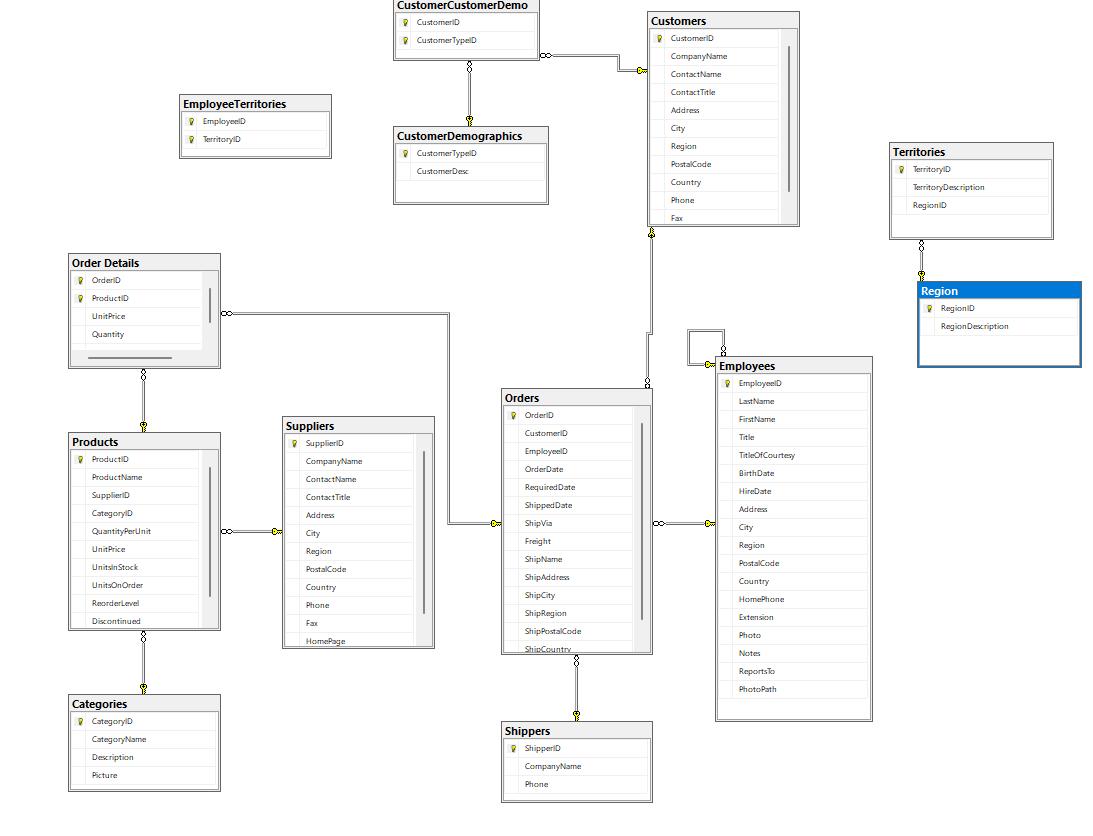Answered step by step
Verified Expert Solution
Question
1 Approved Answer
Order Details Order D Product D UnitPrice Quantity EmployeeTerritories Employee D Territory D CustomerCustomerDemo Customer D Customer TypelD CustomerDemographics CustomerTypeD CustomerDex Customers Customer D


Order Details Order D Product D UnitPrice Quantity EmployeeTerritories Employee D Territory D CustomerCustomerDemo Customer D Customer TypelD CustomerDemographics CustomerTypeD CustomerDex Customers Customer D CompanyName ContactName ContactTitle Address City Region PostalCode Country Phone Territories TerritoryID TerritoryDescription RegionID Fax Orders Order D ! Customer D EmployeelD OrderDate Required Date Shipped Date Employees EmployeelD LastName FirstName Title TitleOfCourtesy BirthDate HireDate Address ContactTitle Address ShipVia Products Product D ProductName Supplier D Category D QuantityPerUnit UnitPrice Unitsin Stock UnitsOnOrder ReorderLevel Discontinued Suppliers Supplier D CompanyName ContactName City Region HomePage PostalCode Country Phone Categories CategoryID CategoryName Description Picture Freight ShipName Ship Address ShipCity C City Region PostalCode Country HomePhone ShipRegion Extension ShipPostalCode Photo ShipCountry Notes Shippers Shipper D CompanyName Phone Reports To PhotoPath Region RegionID RegionDescription 1- Write a SQL statement to return all CategoryID from Products table which are not duplicated. 2- Write a SQL statement to return all fields from Products table. Sort the list by ProductName (in ascending order) and UnitPrice (in descending order). 3- Write one SQL statement to return CustomerID and CompanyName from Customers table, and OrderID and OrderDate from Orders table, and ProductID and UnitPrice from OrderDetails table. 4- Write a SQL statement to return the number of all Unit Price from Products table which is not NULL. 5- Write a SQL statement to return CategoryID, minimum UnitPrice, maximum UnitPrice and number of ProductID from Products table. Group them by CategoryID. 6- Write a SQL statement to return all CompanyName's having letter 'c' anywhere followed by any single letter then followed by letter 'x' from Customers table. 7- Write a SQL statement to return all CompanyName's having letter 'c' anywhere followed by any two letters then followed by letter "i' from Customers table.
Step by Step Solution
There are 3 Steps involved in it
Step: 1

Get Instant Access to Expert-Tailored Solutions
See step-by-step solutions with expert insights and AI powered tools for academic success
Step: 2

Step: 3

Ace Your Homework with AI
Get the answers you need in no time with our AI-driven, step-by-step assistance
Get Started


